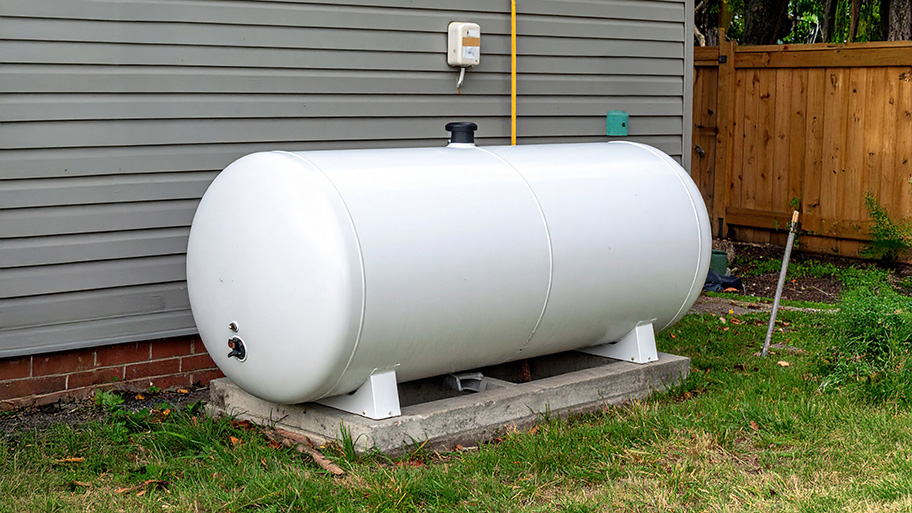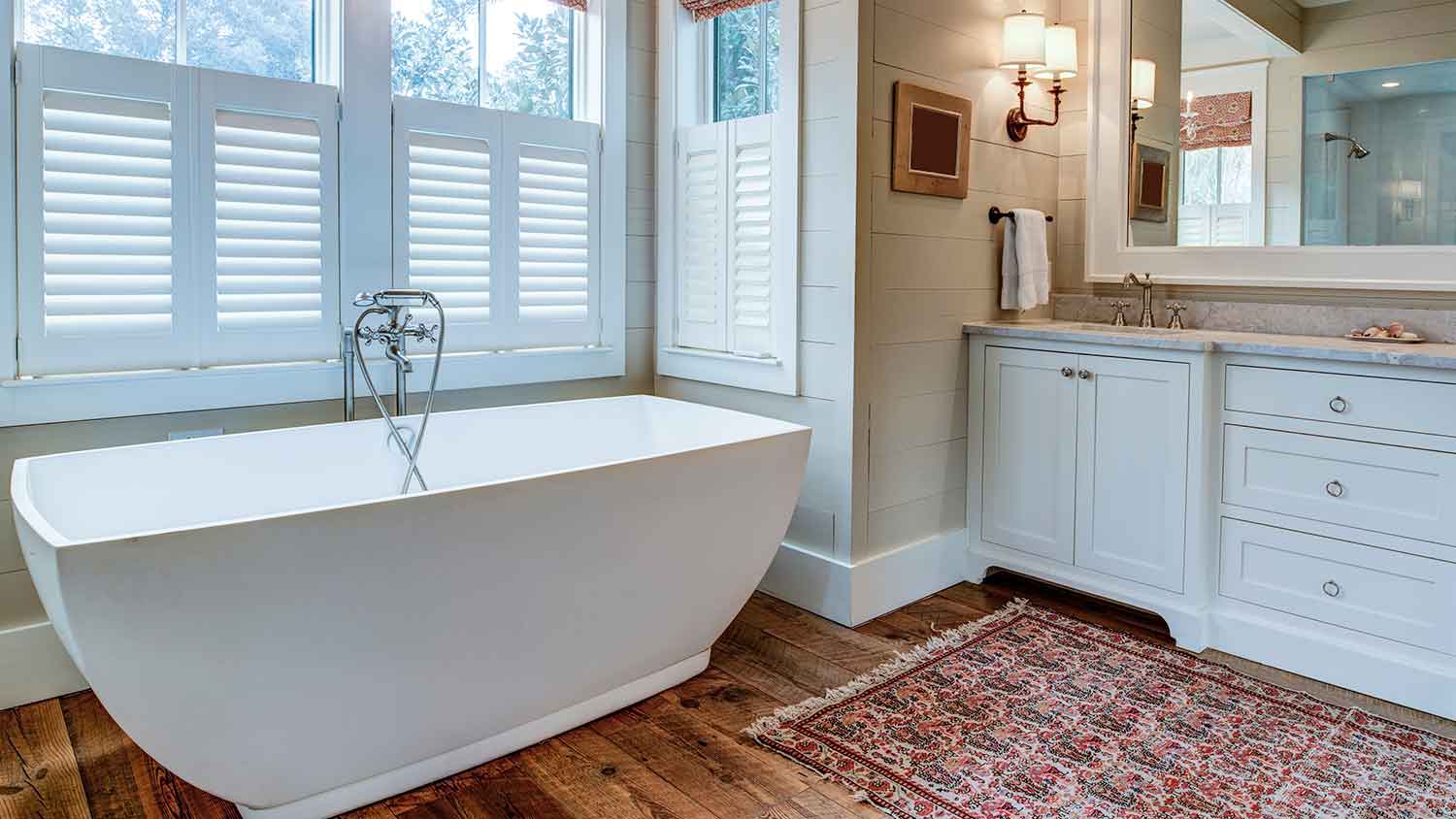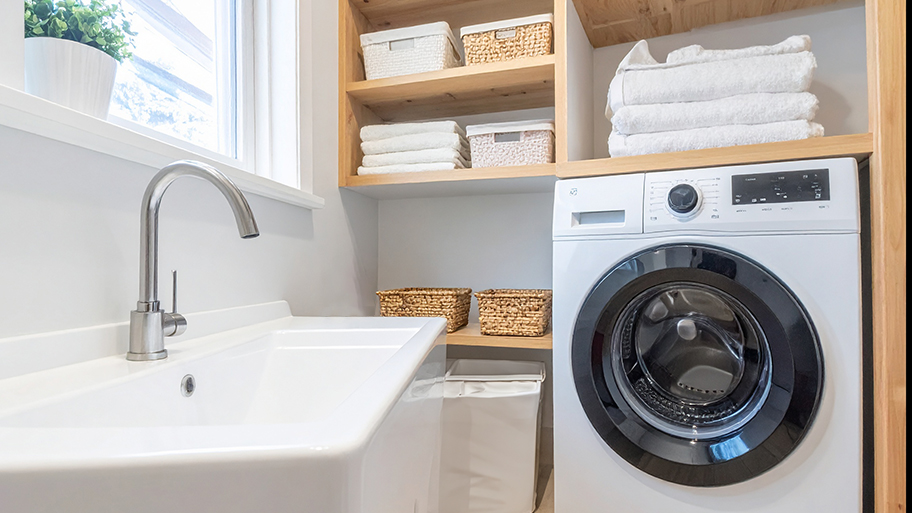
The average propane tank costs between $600 and $2,500, depending on the size, location, and more. Our expert guide explores all the factors.
Plumbing costs depend on your project and location. Check with a local pro for your specific job.
Repiping a house is a considerable investment, with labor making up 70% of the total cost.
The type of pipe impacts the price, with PEX being the least expensive material and copper being the most costly.
Larger homes and homes with more plumbing fixtures require more piping, so expect material and labor costs to increase.
It can significantly raise costs if pipes are challenging to access, like those under concrete or behind walls.
Budgeting for repiping can fix water problems in homes with high or low water pressure, contaminated water, old pipes, and recurring leaks.
The cost to repipe a house runs anywhere from $1,500 to $15,000, but most homeowners pay around $7,500. Costs are considerably lower to repipe a single fixture. Expect to spend an average of $1,200 per fixture, depending on the amount of piping required.
If you frequently pay for plumbing repairs, it might be time to get new pipes. Remodeling your home might also mean you need new pipes to accommodate new fixtures or a different floor plan. This guide explains everything you need to know about home repiping costs based on factors like your home's size and piping material.

Several factors affect the cost of repiping a house, but you can expect about 70% of your total to go toward labor. Accessing and running new piping requires getting behind your walls and under your floors, which is a time-consuming project for your plumber and their team. The size of your home, the type of materials, and other factors also play a role.
Large homes have more plumbing fixtures and require longer runs for pipes and drain lines, so they cost more to repipe. Additionally, multistory homes cost more to repipe than single-story homes because you'll need more piping material to reach plumbing fixtures between floors.
Proper piping is required for all of your home's fixtures, including toilets, sinks, and showers. The more fixtures you have, the more piping you'll need. Rough-in plumbing for a bathroom is costly, as getting pipes to precise locations is more labor-intensive than running plumbing behind walls. If you’re changing your home’s layout, expect to pay more for the total cost.
| Plumbing Fixture | Average Cost Range |
|---|---|
| Sink | $350–$800 |
| Dishwasher | $400–$800 |
| Washing machine | $350–$1,500 |
| Shower | $600–$1,600 |
| Water heater | $700–$1,800 |
There are three main types of piping materials: copper, CPVC, and PEX. Costs vary with the material. For instance, copper ranges from $2 to $8 per linear foot, while CPVC costs $0.50 to $1 per linear foot.
Remember that local codes can dictate the types of pipes you can use. Your plumber can recommend the best material for your home.
| Piping Material | Average Cost per Linear Foot |
|---|---|
| PEX | $0.40–$2 |
| CPVC | $0.50–$1 |
| Copper | $2–$8 |
PEX Pipes: PEX pipes, or cross-linked polyethylene pipes, are flexible, won’t corrode, and it’s less likely these pipes will freeze. They also resist deterioration from scale and chlorine buildup. PEX piping ranges from $0.40–$2 per linear foot.
CPVC Pipes: These common residential pipes require cemented joints to make various angles. CPVC has a lower temperature limit than other piping and costs $0.50–$1 per linear foot.
Copper Pipes: These pipes are the most durable and resistant to bacteria and won’t deteriorate from UV exposure. However, they can burst if it freezes and need pipe insulation. Copper piping ranges from $2–$8 per linear foot.
The size, or diameter, of your pipes also affects costs. Pipes used for waste drainage are wider than pipes designed to carry water. For the same type of piping, larger diameters will be more expensive. However, most drain lines consist of PVC, which is less expensive than copper, so drainpipes should still be more affordable than water supply lines.
If your pipes are in a difficult-to-reach location, expect to pay more for repiping your house. For example, pipes under concrete are more difficult to access than pipes behind drywall, so they cost significantly more to remove and replace.
In most cases, you'll need a permit to repipe your house. This is true when adding plumbing to a new build or changing the layout of your home. Permit fees vary by region, but expect to pay $50 to $500.
Labor makes up most of your home repiping costs, about 70% of your total or around $5,250. The process is labor-intensive and includes the following:
Accessing pipes behind walls
Repairing drywall after pipe replacement
Excavating concrete to expose pipes in the foundation
Repouring concrete to repair the foundation
Maneuvering new lengths of pipe into small wall openings
Sweating dozens of pipe connections
Installing new piping to relocate fixtures
It’s also worth mentioning that labor prices vary based on location, with higher labor prices in cities with a higher cost of living.
Drywall repairs cost around $300 for small and DIY fixes to around $900 or more for bigger projects or drywall replacements. You’ll need to remove and repair or replace drywall to replace the pipes. Leaks or floods from old pipes can damage your drywall, necessitating more extensive repairs or replacement.
The soil around your home can also affect the cost of repiping. For example, clay soil shifts over time, affecting the surrounding plumbing and leading to more costly installations. This is only a factor if you replace buried lines, like water mains, underground pool lines, and sprinkler lines.
If you have a mobile home, expect to pay less to repipe it than a standard house because there’s less piping. The cost to replumb a mobile home is between $1,500 and $4,000.
If your municipality requires a permit for repiping, you’ll need an inspection after the work is done to ensure everything is up to code. In most cases, the initial inspection cost is included in the permit fee. However, reinspection costs $25 to $150 if an issue requires it.

Several other factors can affect the cost of repiping a house, such as the need to remove existing piping. Factoring in these additional costs can help you create a realistic budget.
| Common Add-Ons When Repiping | Average Cost |
|---|---|
| Water main replacement | $600–$2,500 |
| New water heater installation | $850–$1,750 |
In some cases, repiping a house involves replacing the water main, which is the line that runs from your home to the street. Water main replacement costs between $600 and $2,500. Depending on your jurisdiction, the town might be responsible for replacing or maintaining your water main, so this could be an expense you can avoid.
Replacing a water heater costs about $850 to $1,750 on average, and coupling this with pipe replacement is common. Tank water heaters cost $600 to $2,500, while tankless water heaters cost $1,200 to $3,500. Most homes have a tank water heater.
Although tankless water heaters are more expensive, they last about a decade longer and operate more efficiently, so they could save you money over time. If you already have a plumber repiping everything in your home, upgrading to a tankless water heater might be cost-effective.

You turn on the faucet, and discolored water pours out. Or perhaps you’re taking a shower and notice an unusual smell coming from the showerhead. Even a small leak here or there isn’t something to ignore. These could be important warning signs that you need new pipes.
Water Pressure Is Too High or Too Low: Low water pressure can indicate a pipe blockage or leak. High water pressure can put too much stress on the plumbing system and promote pinhole leaks. If the water pressure isn’t just right, it might be time for pipe replacement.
Contaminated Water: If water is discolored or tastes or smells strange, it could be contaminated by worn-out pipes or debris. Rust can cause the water to turn brown, orange, red, or yellow, leading to a smell like rotten eggs. If the water is discolored for just a moment after turning the faucet on, the city could have recently worked on the water lines.
Visible Pipe Damage: If you notice cracked, leaking, or corroded pipes (or other visible damage), they will need replacing.
Recurring Leaks: You’ve patched up a leaky pipe or replaced a small section but keep finding leaks. This could indicate the pipes are deteriorating, meaning it could be time to repipe the house.
Water Temperature Fluctuations: If the water temperature is fluctuating, it could be an issue with the pressure-balancing valves, water heater, or corrosion or buildup inside the pipes. You’ll need a plumber to identify the plumbing problem, and repiping may be the best solution.
Old Pipes: If you have galvanized or lead pipes or pipes over 60 years old and nearing the end of their life, your home could be overdue for a pipe replacement.

Repiping your house isn’t a project to attempt as a DIY—leave this one to the pros. Plumbing work requires expertise to do the job right, since improperly installed pipes can have devastating—and costly—results for your house. Hire a licensed plumbing repair pro near you to repipe your house to prevent some serious problems in the future.
A licensed plumber will ensure this job is done right—here are some reasons you should hire a pro:
Plumbing repair pros know all local codes and will ensure your home’s new pipes are compliant.
A licensed plumber has the tools and expertise to replace your pipes correctly, avoiding the possibility of leaks and other damage.
Plumbers can recommend the right kinds of pipes for your house to last decades, so you don’t need to worry about them for years to come.
A plumbing repair pro can finish the job quickly and efficiently, so you don’t need to be without water for any longer than necessary.
Be prepared to discuss the details of your home’s plumbing, including fixtures and appliances, so the pro knows what to expect.
Find out if the plumber recommends a drywall installer, since you’ll likely need to replace a significant amount of drywall.
If you need to replace your water heater or any fixtures, ask if you need to purchase them in advance or if your plumber will include them in the estimate.
Ask about the project timeline so you can prepare to make arrangements if you need to be out of your home for any length of time.
Home is the most important place on earth, which is why Angi has helped more than 150 million homeowners transform their houses into homes they adore. To help homeowners with their next project, Angi provides readers with the most accurate cost data and upholds strict editorial standards. We extensively research project costs to develop the pricing data you see, so you can make the best decisions for you and your home. We rely on reputable sources, including the U.S. Bureau of Labor Statistics, academic journals, market studies, and interviews with industry experts—all to ensure our prices reflect real-world projects.
Want to help us improve our cost data? Send us a recent project quote to [email protected]. Quotes and personal information will not be shared publicly.
From average costs to expert advice, get all the answers you need to get your job done.

The average propane tank costs between $600 and $2,500, depending on the size, location, and more. Our expert guide explores all the factors.

Making updates to your home? You may need to move your gas line to fuel new appliances or meet code regulations. We’ll cover the cost of moving a gas line, plus project tips.

The cost to add plumbing to a detached garage depends on several factors, including the type of plumbing and the garage's distance from your home.

A new showerhead is an easy, affordable way to upgrade any bathroom. Learn how to change a showerhead, from removing the old to installing the new.

Installing a new kitchen sink involves removing the old sink and putting in the new one. Follow these steps to learn how to install a kitchen sink like a pro.

Got a cold or weak shower? This easy-to-follow guide will help you explore different types of shower valves to keep your shower at the right temperature and pressure.